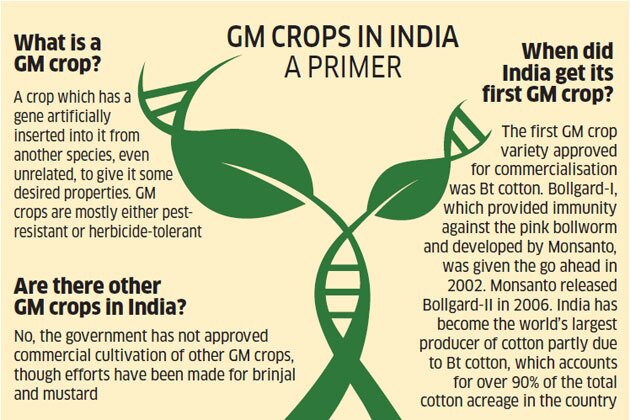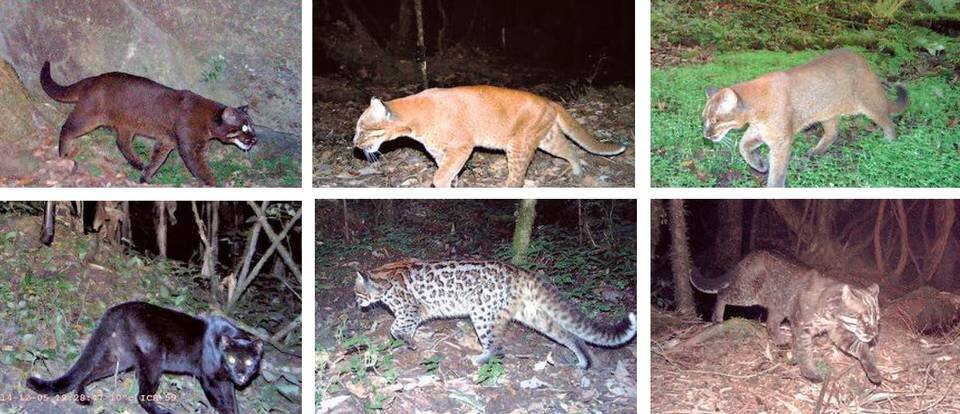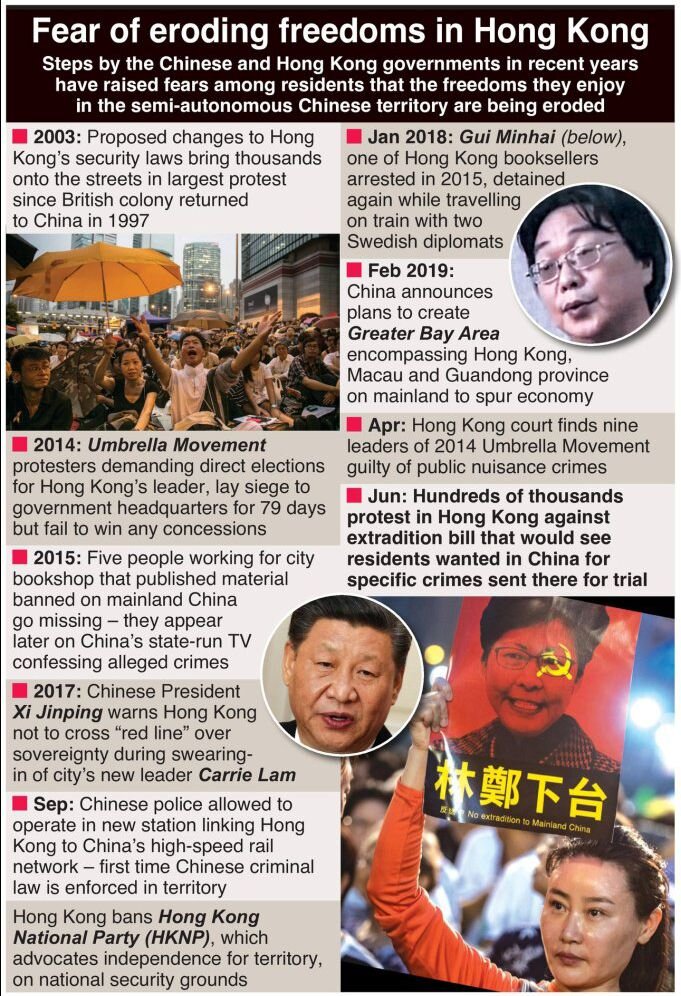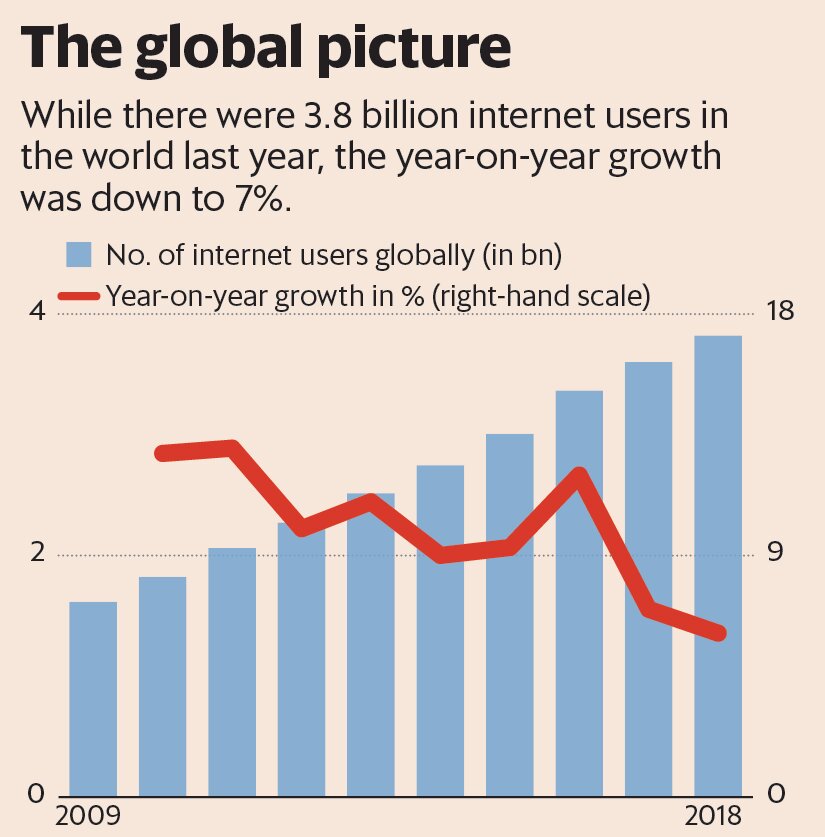The Financial Action Task Force
The Financial Action Task Force (FATF) will hold its Plenary meeting in Orlando, Florida from 16th-21st June wherein it could take up a proposal to downgrade Pakistan to the blacklist on terrorist financing from its current greylisted status.
- The FATF is an inter-governmental body that works to set standards and promote effective implementation of legal, regulatory and operational measures for combating money laundering, terrorist financing and other related threats to the integrity of the international financial system.
- A country is put on the grey list when it fails to curb terrorism financing and money laundering.
- Putting a country on the blacklist means shutting all doors to international finance for that country.
Pakistan’s status
- Pakistan has been under the FATF’s scanner since June, 2018, when it was put on the greylist for terror financing and money laundering risks, after an assessment of its financial system and law enforcement mechanisms.
- In June 2018, Pakistan gave a high-level political commitment to work with the FATF and the Asia Pacific Group (APG) to strengthen its anti-money laundering/combating the financing of terrorism (AML/CFT) regime.
- Based on this commitment, Pakistan and the FATF agreed on the monitoring of 27 indicators under a 10-point action plan, with deadlines.
- Successful implementation of the action plan and its physical verification by the APG will move Pakistan out of the greylist; failure by Pakistan will result in its blacklisting by September 2019.
- FATF wants to see effective implementation of targeted financial sanctions against all terrorists designated under UN Security Council Resolutions 1267 and 1373.
- The Joint Group of the APG has recently informed Pakistan that the country’s compliance on 18 of the 27 indicators is unsatisfactory, though the FATF has agreed that there have been improvements in the AML/CFT regime and the integrated database for currency declaration arrangements.
- At least three votes (out of 36) would be needed to block a move to blacklist Pakistan. Pakistan may make a diplomatic push to thwart blacklisting.
Impact of being blacklisted
- Pakistan’s $6 billion loan agreement with the International Monetary Fund (IMF) could be threatened.
- Pakistan faces an estimated annual loss of $10 billion if it stays in the greylist; if blacklisted, its already fragile economy will dealt with a powerful blow.
India’s Role
- India is a voting member of the FATF and APG, and co-chair of the Joint Group.
- India was not part of the group that moved the resolution to greylist Pakistan in 2018 in Paris. The movers were the US, UK, France, and Germany and China did not oppose.
- As of now, India is pushing for Pakistan to be blacklisted.
- There is also an opinion that by keeping Pakistan in the grey list one can continue to pressure the country as well as scrutinise its actions.
Asia Pacific Group
The Asia/Pacific Group on Money Laundering is an inter-governmental organisation, consisting of 41 member jurisdictions, focused on ensuring that its members effectively implement the international standards against money laundering, terrorist financing and proliferation financing related to weapons of mass destruction.
UN Security Council Resolutions 1267 and 1373
- The UNSC resolution 1267 was adopted unanimously on October 15, 1999. It is a consolidated list of people and entities that UN has determined as being associated with Al Qaeda or the Taliban, and laws which must be passed within each member nation to implement the sanctions.
- The UNSC Resolution 1373 was adopted on 28th September, 2001. It declares international terrorism a threat to international peace and security and imposes binding obligations on all UN member states.
Unapproved Sowing of Genetically Modified Crops
The Ministry of Environment, Forest and Climate Change (MoEFCC) has sought a detailed report on the sowing of unapproved Genetically Modified (GM) Cotton and Brinjal in Maharashtra.
- Organised by the farmer’s union Shetkari Sanghtana, more than 1,000 farmers had publicly sown unapproved transgenic cotton and brinjal in Akola district of Maharashtra demanding introduction of Herbicide Tolerant (Ht) Bt cotton and Bt brinjal.
- The farmers termed it as the ‘civil disobedience’ movement to protest central government’s indecisiveness in approving the next generation of Genetically Modified (GM) cotton.
Background
- In India, the introduction of GM seeds requires approval of the Genetic Engineering Approval Committee (GEAC), a body under theMoEFCC.
- Till date (2019), commercial release is granted for Bt cotton, but similar approvals for Bt mustard and Bt brinjal are awaited.
- In case of cotton, the first two generations of Bt have seen the introduction of ‘Cry1Ab’ and ‘Cry2Bc’ genes from the soil bacterium, Bacillus thuringiensis (Bt), into the cotton seed.
- This makes the crop resistant to the attack of pink bollworm.
- The third generation, i.e. herbicide tolerant Bt (HtBt) cotton variety saw the addition of ‘Cp4-Epsps’ gene from another soil bacterium, Agrobacterium tumefaciens, which produces a modified protein that allows the plant to withstand herbicide glyphosate.

- Farmers are not able to spray glyphosate on normal cotton because the chemical does not distinguish between the crop and weed, but the herbicide tolerant Bt (HtBt) cotton remains unaffected by glyphosate.
- Like the first two hybrids, Ht Bt has also been developed by the US giant Bayer Monsanto.
- The company had submitted a proposal to GEAC for approval in 2013. However, the proposal was later withdrawn by the company because of various regulatory issues with the government.
- While Ht Bt is not approved for commercial release, farmers in Gujarat, Andhra Pradesh and Maharashtra have been surreptitiously planting the crop using smuggled seeds.
- According to estimates by the Commissioner of Agriculture, Maharashtra, as much as 15% of the 40 lakh hectares of the state had come under this unapproved hybrid.
- Earlier, there have been complaints from Coalition for GM Free India regarding suspected open cultivation of Ht Bt cotton and Bt brinjal in Maharashtra, Haryana, Andhra Pradesh and Punjab.
Jumping Genes in Gene Editing
The scientists have recently discovered a technique using “jumping genes” for genetic editing. It could offer a seamless, safer alternative to CRISPR-Cas9 process.
- The technique could allow edited genes to be more precisely inserted into genomes, possibly addressing concerns with current CRISPR systems that can lead to off-target editing and random deletions or even cancer.
- Gene editing: it is the process of altering a part of the DNA code. It can correct or delete parts of that code, or insert new sections, for preventing diseases.
- CRISPR tools currently use enzymes like Cas9 and Cas13 to cut and delete a portion of the genetic code, counting on the cell to use its repair function to glue the cut strands back together.
- The process is not always effective, sometimes the repairs are incomplete or incorrect, and the damage response prompted by the cutting can have negative side effects.
Transposons or Jumping Genes
- Jumping genes are also known as transposons, it randomly jumps from one site to the other, inserting genetic information as they go, using enzymes called transposases.
- It can effectively slide into the DNA without cuts.
- The jumping gene possesses all the necessary chemical properties to directly insert, or integrate without a DNA double-strand break.
- Jumping gene could effectively be programmed with a guide, and it can insert itself with incredible precision into user-defined sites in the genome.
- Researchers sequenced the edited genome and found that the insertion was precisely done, with no extra copies created elsewhere, a problem that can occur with gene editing that uses CRISPR.
- The researchers found the jumping gene was capable of depositing “genetic cargoes into the genome,” delivering sequences up to 10,000 bases long.
- This approach could allow for therapeutic genes to be inserted into the genome in a potentially safer way than is currently possible. It could be a game-changer for certain types of cells, like neurons, which resist gene editing using the “cutting” process.
India to Set Up its Own Space Station
India is planning to launch its own space station by 2030, joining the league of US, Russia, and China to an elite space club.
- A space station is a habitable spacecraft capable of supporting human crewmembers and designed to remain in space.
- As of now, the International Space Station (ISS) is the only fully functioning space station and largest human-made body in low Earth orbit.
Indian Space Station
- The Indian space station will be much smaller (mass of 20 tonnes) than the International Space Station and will be used for carrying out microgravity experiments (not for space tourism).
- Preliminary plan for the space station is to accommodate astronauts for up to 20 days in space, and the project will be an extension of the Gaganyaan mission.
- It will orbit Earth at an altitude of around 400km.
- ISRO (Indian Space Research Organisation) is working on space docking experiment (Spadex), a technology that is crucial for making the space station functional.
- space docking is a technology that allows transferring humans from one spacecraft to another.
Significance
- Space station is essential for collecting meaningful scientific data, especially for biological experiments.
- Provide platforms for greater number and length of scientific studies than available on other space vehicles. ( as Gaganyaan will take humans and experiments in microgravity for few days only).
- Each crew member stays aboard the station for weeks or months, but rarely more than a year.
- Space stations are used to study the effects of long-term space flight on the human body.
Color Morphs of Wild Cat
Indian scientists from the Zoological Society of London (ZSL), an international conservation charity, and University College London (UCL) have discovered six color morphs of the golden cat in Dibang Valley of Arunachal Pradesh.
- Six color morphs include tightly-rosetted,cinnamon, melanistic, gray, golden, and ocelot types.
Color morphs
- Colour morphs are basically occurrence of two or more discrete colour forms of the animal within a population. for example- Black panther is a color morph of the common leopard.
- Colour morphs are thought to arise from random genetic mutations and take hold in the population through natural selection.
- Dibang Valley hosts the world’s most diverse range of colour morphs of a wild cat species ever reported in one site.
Significance
- Understanding the evolutionary theory of color morphs could help scientists to understand how quickly species can adapt and evolve to changing environments.
- This would help scientists to gain better insight into the resilience capacity of the species to climate change or habitat degradation and destruction, which is also the reason for decreasing population of these species.
- Color Morphs could help in conservation of Asiatic Golden Cats, as it provides Ecological Benefits to cats like:
- occupying different habitats at different elevations from wet tropical lowland forests to alpine scrubs .
- Providing camouflage while preying on pheasants and rabbits.
Asiatic Golden Cat
- Asiatic Golden Cat is a medium-sized wild cat native to north-eastern Indian subcontinent
- The Asiatic golden cat (Catopuma temminckii) is listed as near threatened on the International Union for Conservation of Nature’s Red List of threatened species.
- Asiatic cats are mentioned in Wildlife protection Act’s schedule 1.
- Wild cats are also included in Convention on International Trade in Endangered Species of Wild Fauna and Flora(CITES) appendix 1
Dibang Valley
- Dibang Valley District is located in the North-Easternmost corner of Arunachal Pradesh.
- Largest district of Arunachal Pradesh with the lowest density of population in India.
- India’s first ‘snow tigers’ were spotted in upper reaches of Dibang Valley.
Hongkong Protest
Massive protests in Hongkong has erupted against a government plan to allow extradition to mainland China.
- The mass demonstration was one of the largest in the city’s history and a stunning display of rising fear and anger over the erosion of civil liberties.
- The protest recalled the pro-democracy Umbrella Movement five years ago.

About Hongkong
- Hongkong is situated on the southeast coast of China, Hong Kong’s strategic location on the Pearl River Delta and the South China Sea has made it one of the world’s most thriving and cosmopolitan cities.
- Hong Kong as we know it today was born when China’s Qing dynasty government was defeated in the First Opium War in 1842. It ceded Hong Kong Island to Britain. Hong was under the control of the British empire until 1997. The Sino-British declaration under the principle of 'One Country, Two Systems', Hong Kong became a Special Administrative Region(SAR) of the People's Republic of China on 1 July 1997.
- This arrangement allows the city to enjoy a high degree of autonomy, including retaining its capitalist system, independent judiciary and rule of law, free trade and freedom of speech.
- The interference of the communist regime of China in the internal affairs of Hongkong and its oppressive policies have led to various pro-democracy protests for autonomy in recent times.
Rare Easterly Winds over the Indian Ocean
- Climate Prediction Centre of the US National Weather Service has said that unusually warm waters in the Arabian Sea have set up a rare band of easterly winds over the Indian Ocean, which has significantly delayed the monsoon onset over the Kerala coast.
- The number of factors has led to a dry spell in India, which is likely to continue throughout June.
- Madden-Julian Oscillation (MJO): Its location and strength may play an important role in the development of monsoon over India during the next several weeks.
- Cyclone ‘Vayu’: It took advantage of an MJO wave traversing the West Indian Ocean and adjoining South Arabian Sea.
- Storm initiation: Over the East Indian Ocean and adjoining Bay of Bengal have led to oceanic circulation over North-East and adjoining East-Central Bay.
Madden-Julian Oscillation
- It is an oceanic-atmospheric phenomenon which affects weather activities across the globe. It brings major fluctuation in tropical weather on weekly to monthly timescales.
- The MJO can be defined as an eastward moving 'pulse' of clouds, rainfall, winds and pressure near the equator that typically recurs every 30 to 60 days.
- It’s a traversing phenomenon and is most prominent over the Indian and Pacific Oceans
Internet Trends Report: 2019
Mary Meeker’s (US, based global technology investment firms owner) annual report, on “Internet Trends 2019” has placed India just next to China in terms of the active Internet user base.
- Top three countries in terms of the Internet user base are China (21%), India (12%) and the USA (8%).

- India's internet growth has largely been driven by telecom operator Reliance Jio, which Meeker pointed out, had grown double in a year reaching 307 million subscribers.
- In terms of internet regulations, India is moderately regulated.
- More than 50% of the world’s population has access to the internet, and 53% of the world’s internet users are located in the Asia-Pacific region.
- Digital payments now account for 59% of everyday transactions across the world.
- 55% of internet users live in a country where political, social, or religious content is censored or blocked.
- Facebook, YouTube, and Twitter continue to be the biggest sources for news.
- Media consumption on mobile devices (33%) almost equal that of time spent on TV (34%).
- Removing offensive and violent content from platforms would be a continuous challenge and social media would lead to increased political polarisation and divisiveness.
Varunastra
- The Indian Navy has decided to induct an indigenously (95%) developed heavyweight torpedo "Varunastra" into its arsenal.
- This induction will put India in a group of only eight countries that have the capability to manufacture heavyweight torpedoes.
- Torpedo is a cigar-shaped, self-propelled underwater missile, launched from a submarine, surface vessel, or airplane and designed for exploding upon contact with the hulls of surface vessels and submarines.
- Varunastra is a ship-launched, electrically-propelled underwater weapon equipped with one of the most advanced automatic and remote-controlled guidance systems. The weapon system uses its own intelligence in tracing the target. It can hit stealth submarines underwater.
- It is seven to eight metres long, weighs 1,500 kg and has a diameter of 533 mm. The anti-submarine electric torpedo when fired can travel at 40 knots, or 74 kmph. The operational range is 40 km and it can carry a warhead weighing 250 kg.
- The weapon has been jointly developed by the Naval Science and Technology Laboratory (NTSL), Visakhapatnam and the Bharat Dynamics Limited -BDL (Hyderabad).
- Naval Science & Technological Laboratory (NSTL), Visakhapatnam was established on August 20, 1969 to undertake research and development of complete major naval systems (Underwater Mines, Torpedoes, Fire Control Systems, Weapon Launchers, Targets, Decoys, etc) for the Indian Navy to make it self-reliant.
- Bharat Dynamics Limited (BDL), a Government of India Enterprise under the Ministry of Defence was established in Hyderabad in the year 1970 to be a manufacturing base for guided missiles and allied defence equipment.

